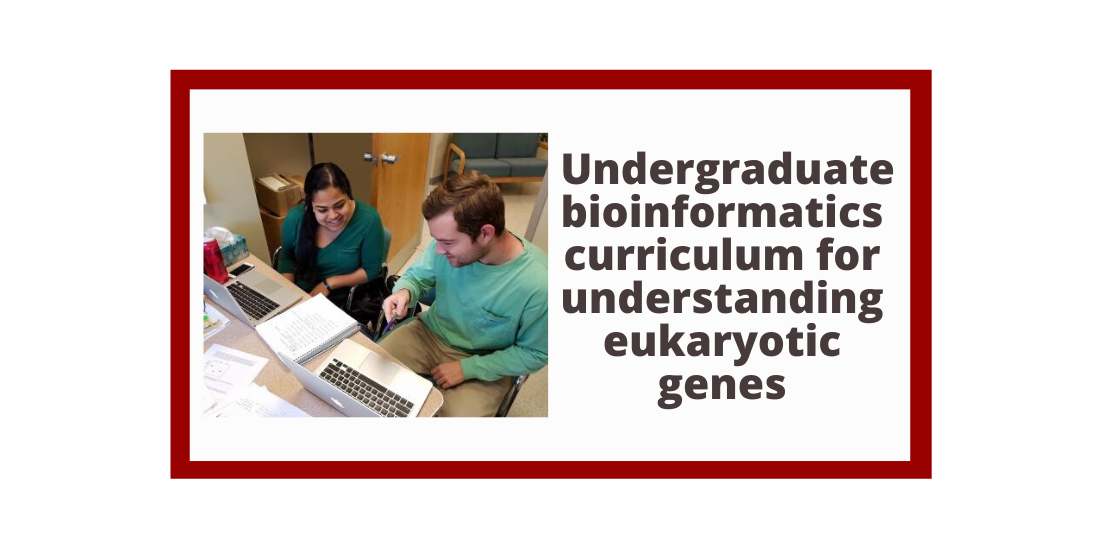Laakso, M.M., Paliulis, L.V., Croonquist, P., Derr, B., Gracheva, E., Hauser, C., Howell, C., Jones, C.J., Kagey, J.D., Kennell, J., Silver Key, S.C., Mistry, H., Robic, S., Sanford, J., Santisteban, M., Small, C., Spokony, R., Stamm, J., Van Stry, M., Leung, W., Elgin, S.C.R. 2017. An undergraduate bioinformatics curriculum that teaches eukaryotic gene structure. CourseSource. https://doi.org/10.24918/cs.2017.13
Abstract
Gene structure, transcription, translation, and alternative splicing are challenging concepts for many undergraduates studying biology. These topics are typically covered in a traditional lecture environment, but students often fail to master and retain these concepts. To address this problem we have designed a series of six Modules that employ an active learning approach using a bioinformatics tool, the genome browser, to help students understand eukaryotic gene structure and functionality. Students learn how to use a mirror site of the UCSC Genome Browser created by the Genomics Education Partnership while completing the Modules, which focus on gene structure, transcription, splicing, translation, and alternative splicing. The Modules are supplemented with short videos that illustrate key functionalities of the genome browser and fundamental concepts in processing transcripts. These materials have been used successfully to teach gene structure in many different settings, from community colleges to 4-year colleges and universities, encompassing advanced high school students to college seniors. Instructors can easily customize the Modules and/or select a subset for their curriculum. The Modules have helped our students learn about eukaryotic gene structure and expression, simultaneously acquiring skills in the use of a genome browser, and have prepared them to pursue genome annotation projects as independent research.

